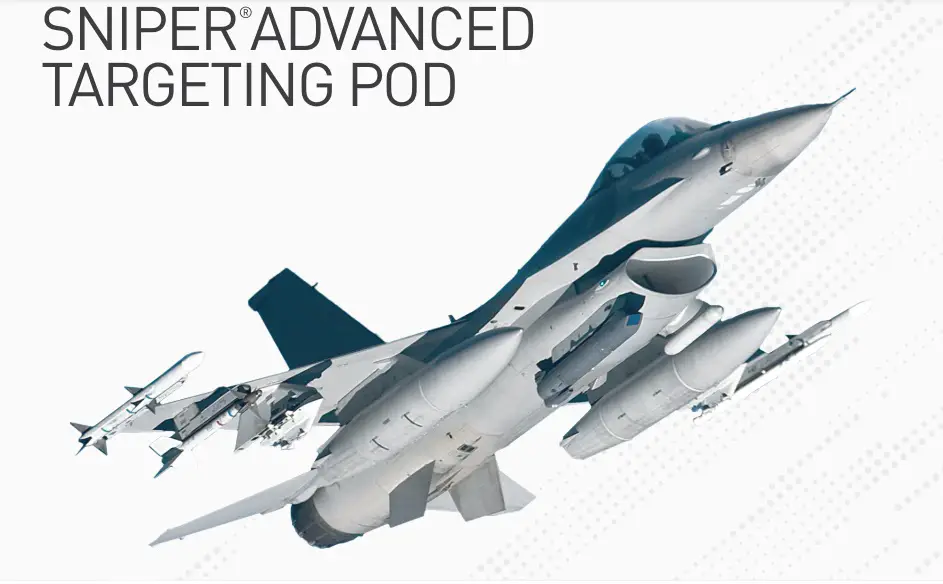Lockheed Martin has initiated the establishment of a new production line dedicated to AN/AAQ-33 Sniper Advanced Targeting Pod (ATP) components at its facility in Ampthill, Bedfordshire, United Kingdom. Janes reported this strategic move aims to cater to the growing demand expected from NATO allies and other global customers for this advanced targeting system. The decision to expand production capabilities in the UK underscores Lockheed Martin’s commitment to meeting the evolving needs of its international clientele. The work undertaken at the Ampthill site will complement the existing manufacturing operations in Ocala, Florida, ensuring seamless coordination and efficiency in meeting production targets. One of the key objectives of the new production line in Ampthill is to focus on the manufacturing of cabling essential for the integration of the AN/AAQ-33 Sniper ATP into various aircraft platforms.
This significant investment in expanding production capacity reflects Lockheed Martin’s broader strategic vision for sustaining its position as a premier provider of defense technologies. The company aims to capitalize on emerging opportunities in the global defense market. The decision to establish a production line in the UK aligns with Lockheed Martin’s commitment to fostering partnerships with international allies and enhancing regional industrial capabilities. This move not only strengthens the company’s presence in the UK but also contributes to the broader defense industrial base, promoting job creation and economic growth. Lockheed Martin’s expansion of production capacity for the AN/AAQ-33 Sniper ATP components underscores a shifting outlook among defense customers. Lockheed Martin’s initiative to build a new production line for AN/AAQ-33 Sniper ATP components in the UK signifies a proactive approach to addressing the evolving needs of the defense market.

The Lockheed Martin Sniper is a targeting pod for military aircraft that provides positive target identification, autonomous tracking, GPS coordinate generation, and precise weapons guidance from extended standoff ranges. The system has been designated AN/AAQ-33 in U.S. military service as the Sniper Advanced Targeting Pod (ATP). Further variants are the Sniper Extended Range (XR), as well as the PANTERA export derivative of the Sniper XR. The Lockheed Martin F-35 Lightning II is built with the equivalent of the Sniper XR in its onboard sensors.[1] The most modern version is the Sniper Advanced Targeting Pod – Sensor Enhancement (ATP-SE). The Sniper is a single, lightweight targeting pod with much lower aerodynamic drag than the systems it replaces. Its image processing allows aircrews to detect, identify and engage tactical-size targets outside the range of most enemy air defenses, giving it a crucial role in the destruction of enemy air defense missions.
The Lockheed Martin Sniper also supports urban engagements beyond jet noise range for counter-insurgency operations. It offers a 3-5X increase in detection range over the older LANTIRN system [citation needed], and is currently flying on U.S. Air Force and multinational F-16, F-15, B-1B, CF-18, Harrier, A-10, B-52 and Tornado aircraft. The pod incorporates a high definition mid-wave FLIR, dual-mode laser, visible-light HDTV, laser spot tracker, laser marker, video data link, and a digital data recorder Advanced sensors and image processing incorporating image stabilization enable targets to be identified at ranges which minimize exposure to defensive enemy systems. The dual-mode laser offers an eye-safe mode for urban combat and training operations along with a laser-guided bomb designation laser. Sniper’s optical bed design, partitioning, and diagnostic capabilities permit two-level maintenance, eliminating costly intermediate-level support.
















